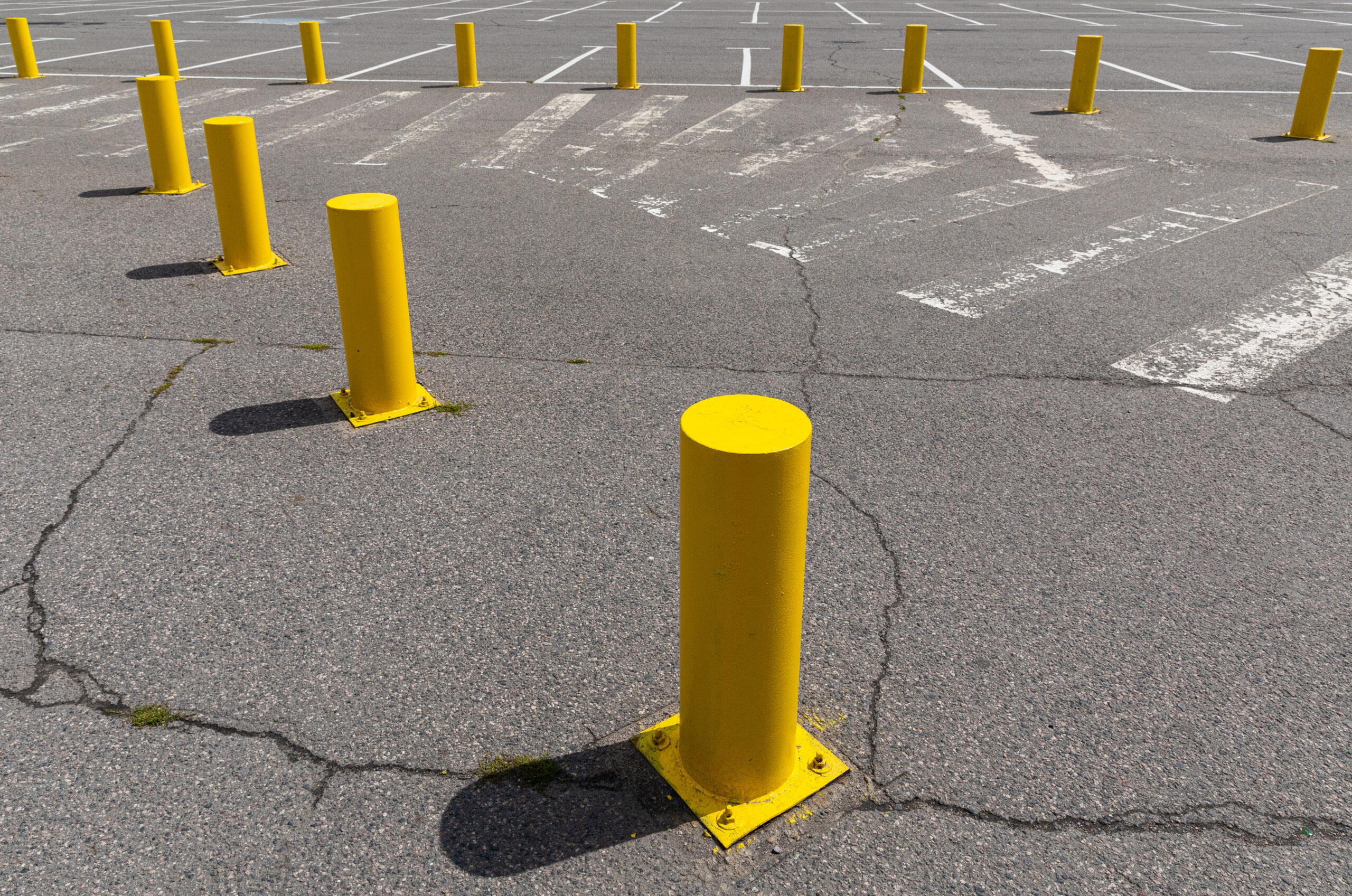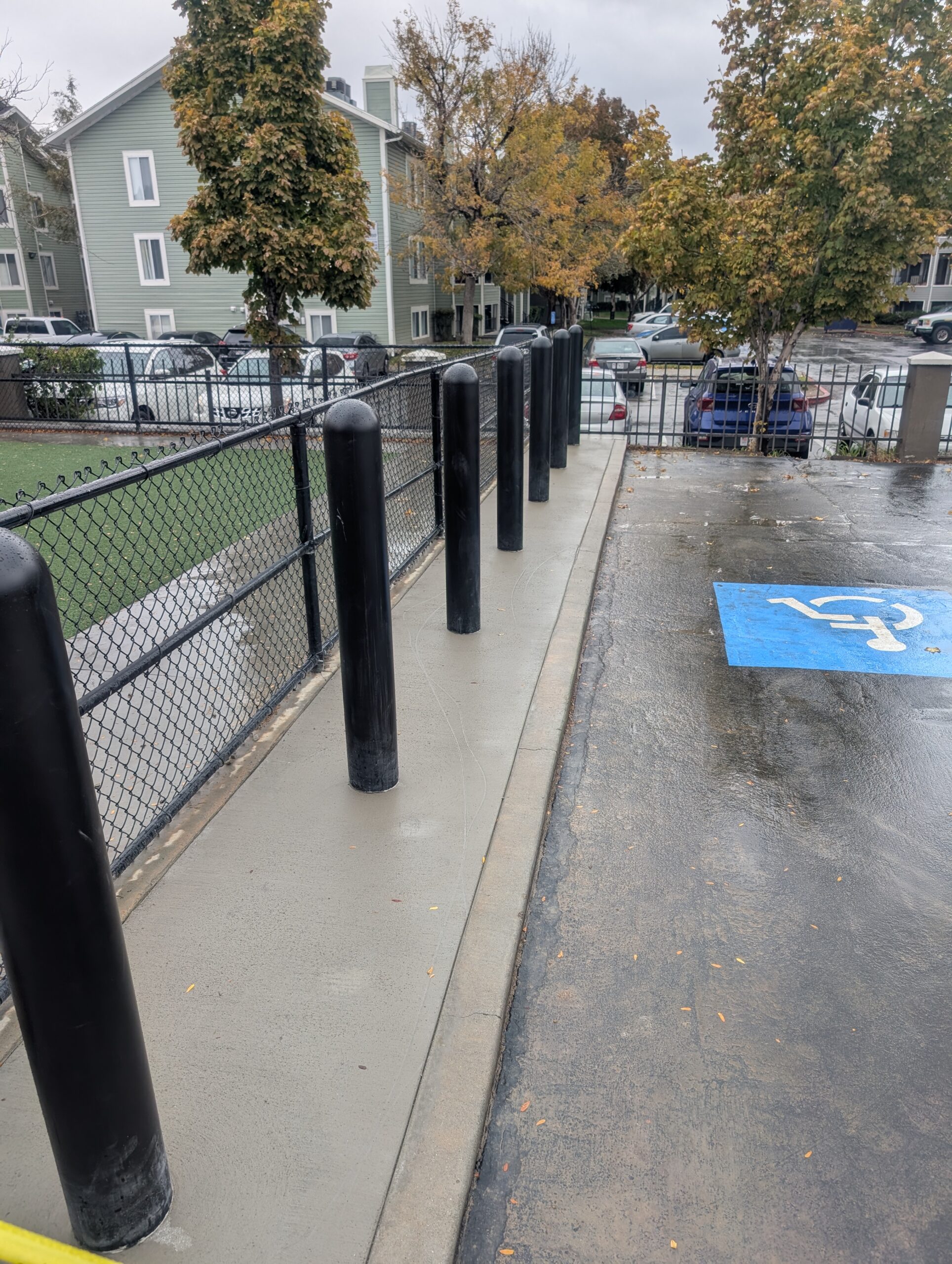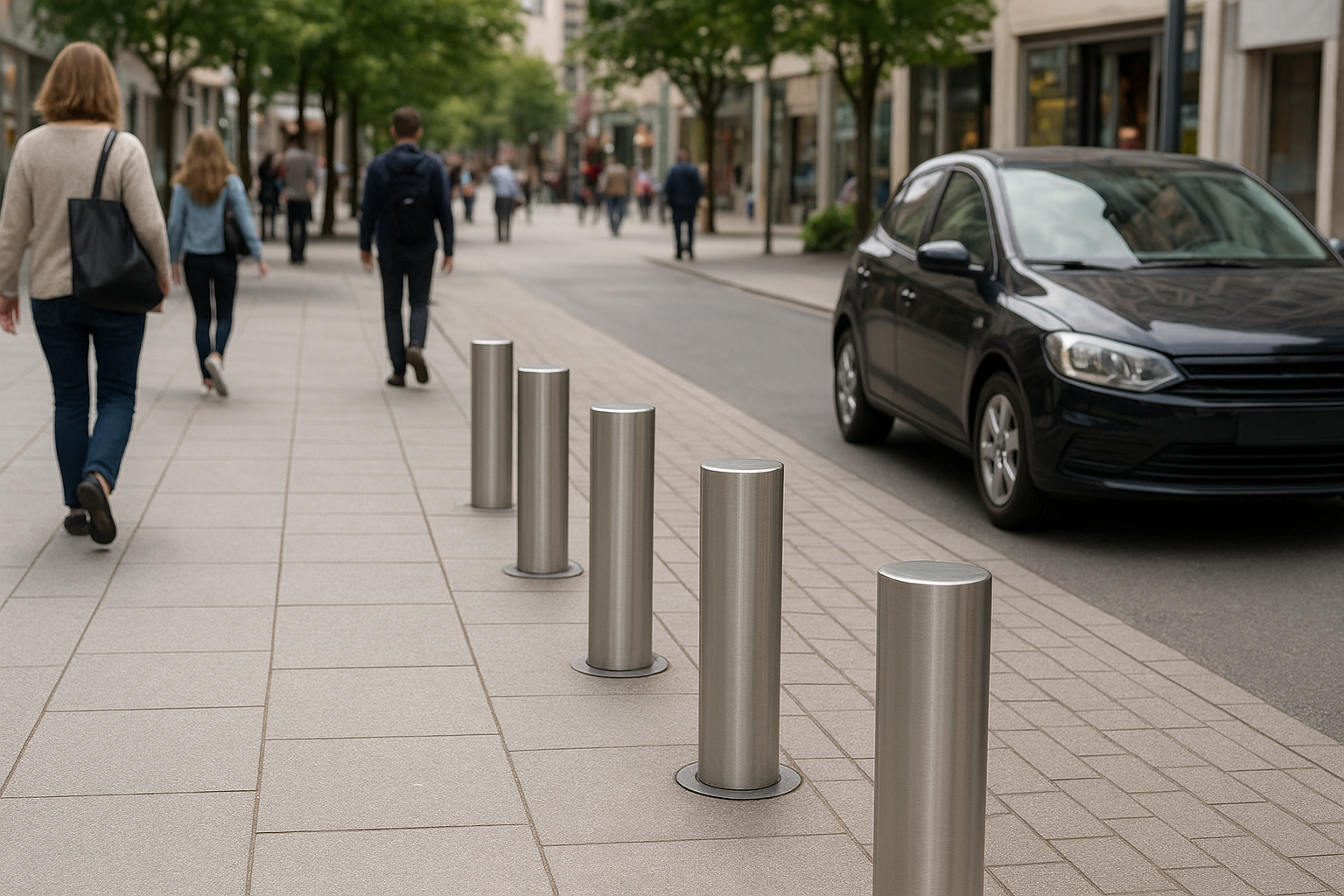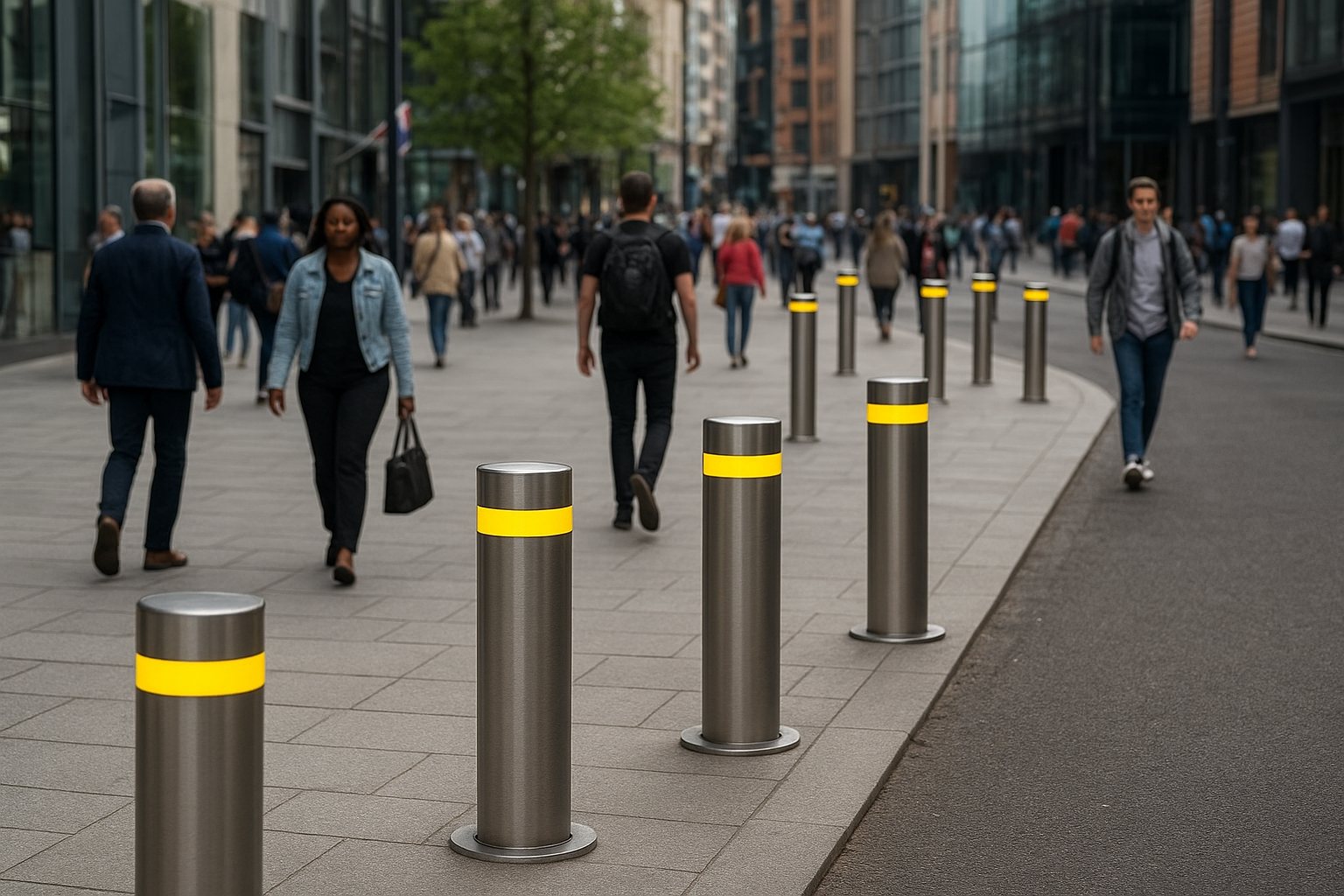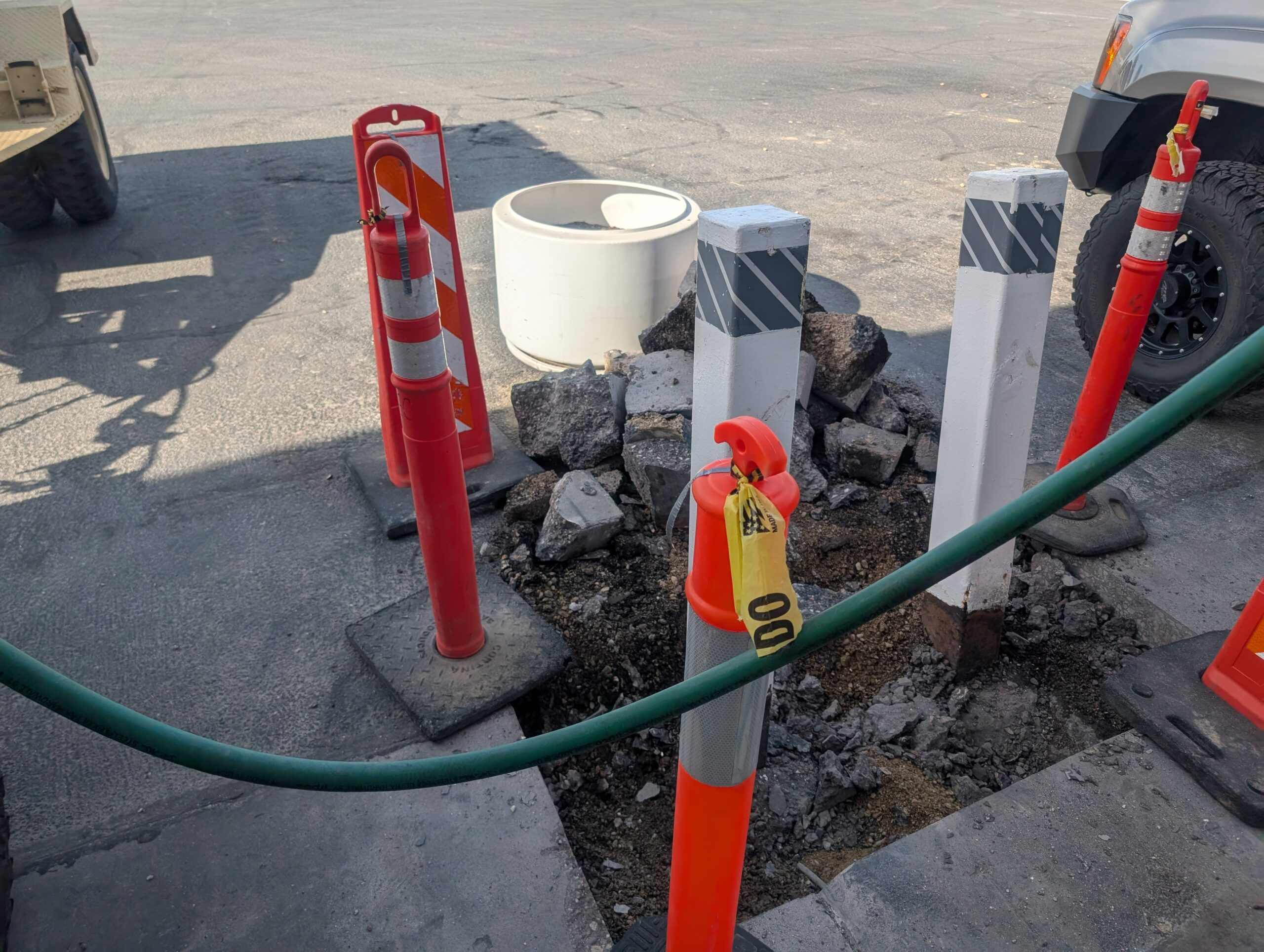From fixed barriers to smart signage bollards, they protect pedestrians, reduce accidents, and foster walkable communities
Separating Foot Traffic from Cars: The Vital Role of Bollards in Urban Safety
Introduction
In bustling cities and suburban hubs, the coexistence of pedestrians and vehicles poses a constant challenge. With urban areas growing denser—over 55% of the global population lived in cities in 2025, according to the United Nations—separating foot traffic from cars has become a critical priority for safety and efficiency. Bollards, those sturdy vertical posts, are a cornerstone solution, creating clear boundaries to protect pedestrians, guide vehicles, and enhance urban livability. Bollard Brothers, a leader in innovative bollard solutions, has transformed countless spaces by effectively separating foot traffic from vehicular zones. This article explores the importance, methods, benefits, and real-world applications of using bollards to separate pedestrians from cars, offering a comprehensive guide for municipalities, businesses, and communities as of August 2025.
The Need for Separation: A Growing Urban Challenge
The convergence of pedestrians and vehicles in shared spaces leads to significant risks. The National Highway Traffic Safety Administration reported over 7,500 pedestrian deaths in the U.S. in 2024, with 60% occurring in urban areas where foot traffic intersects with vehicles. Accidents often stem from distracted driving, poor visibility, or unclear boundaries in places like parking lots, downtown streets, or school zones. Beyond accidents, vehicle-ramming attacks, such as those in Nice (2016, 86 deaths) and London (2017, 8 deaths), highlight the need for robust barriers to prevent intentional harm.
Separating foot traffic from cars addresses these dangers by:
Reducing pedestrian-vehicle collisions.
Improving traffic flow and reducing congestion.
Enhancing the pedestrian experience, encouraging walkability and community engagement.
Protecting vulnerable populations, such as children, the elderly, or disabled individuals.
Bollards are uniquely suited to this task, offering durability, versatility, and aesthetic integration to create safe, organized urban environments.
How Bollards Separate Foot Traffic from Cars
Bollards work by establishing physical and visual barriers that delineate pedestrian zones from vehicular areas. Their mechanics and design vary based on the environment and purpose, but their core function is to prevent vehicles from entering pedestrian spaces while guiding foot traffic safely. Here’s how different types of bollards achieve this:
Fixed Bollards
Mechanics: Embedded 2-3 feet into the ground with high-strength concrete, fixed bollards create permanent barriers. Materials like stainless steel (316-grade), concrete, or Ferrocast polyurethane ensure impact resistance, capable of stopping a 7,500-pound vehicle at 30 mph per ASTM F2656 standards.
Function: Define pedestrian-only zones, such as sidewalks, plazas, or crosswalks, preventing vehicle intrusion. Their rigid structure absorbs and dissipates impact energy, protecting walkers.
Example: In a 2024 Chicago downtown project, Bollard Brothers’ fixed Ferrocast bollards along Michigan Avenue reduced pedestrian-vehicle incidents by 20%, safeguarding thousands of daily commuters.
Removable Bollards
Mechanics: Use locking sleeves embedded in concrete, allowing manual removal with a key or tool. Lightweight materials like aluminum or Ferrocast (50-100 pounds) make them easy to handle, with spring-assisted mechanisms for smooth operation.
Function: Provide temporary separation for multi-use spaces, allowing vehicle access for deliveries or maintenance while securing pedestrian zones during peak hours.
Example: A 2025 Seattle pedestrian mall used Bollard Brothers’ removable bollards to create a car-free zone during market hours, cutting unauthorized vehicle entries by 90%.
Retractable/Pneumatic Bollards
Mechanics: Rise and lower via air or hydraulic systems, with 3-5 second cycle times. Controlled by remote apps or panels, they use stainless steel casings and gas springs or fluid pumps for reliability. Bollard Brothers’ “EcoGuard” pneumatic bollards require minimal maintenance, with zero leaks in a 2024 Melbourne project.
Function: Allow controlled vehicle access (e.g., for emergency vehicles) while maintaining pedestrian safety. They’re ideal for dynamic environments like event spaces or transit hubs.
Example: In a 2025 Los Angeles festival, retractable bollards separated 50,000 attendees from vehicle routes, ensuring zero incidents.
Illuminated Bollards
Mechanics: Integrate LED lighting (50,000-hour lifespan) or reflective bands, powered by municipal grids or solar panels. Sensors adjust brightness for visibility in low-light conditions, meeting ASTM D4956 standards.
Function: Enhance nighttime separation by clearly marking pedestrian paths, reducing accidents in poorly lit areas like parking lots or crosswalks.
Example: A 2024 UK school zone project using Bollard Brothers’ illuminated bollards cut nighttime accidents by 22%, guiding children safely across roads.
Signage Bollards
Mechanics: Feature engraved, mounted, or digital signs (e.g., “Pedestrian Only” or directional arrows) on stainless steel or Ferrocast posts. Digital displays use OLED or LED for dynamic messaging, often with IoT connectivity.
Function: Provide clear instructions to drivers and pedestrians, reinforcing physical separation with visual cues. QR codes or smart displays guide foot traffic to safe routes.
Example: In a 2025 Riverton plaza, signage bollards with “No Vehicles” signs reduced traffic violations by 15%, enhancing pedestrian safety.
Smart Bollards
Mechanics: Equipped with IoT sensors, AI, and 5G connectivity, these bollards monitor pedestrian and vehicle activity, alerting authorities to risks. Solar-powered options ensure sustainability.
Function: Dynamically manage separation by detecting crowd density or errant vehicles, adjusting signage or alerting security. They integrate with smart city systems for real-time coordination.
Example: Bollard Brothers’ SmartShield bollards in a 2024 Singapore project reduced pedestrian congestion by 12%, guiding foot traffic away from busy intersections.
Benefits of Using Bollards to Separate Foot Traffic
1. Enhanced Pedestrian Safety
Bollards create a physical barrier that prevents vehicles from entering pedestrian zones, significantly reducing accidents. A 2025 Urban Safety Institute study found that bollard-protected areas saw an 18% drop in pedestrian injuries. For vulnerable groups, such as children or the disabled, bollards ensure safe, accessible pathways, meeting ADA requirements (36-inch clear widths).
2. Reduced Vehicle-Related Risks
Crash-rated bollards protect against both accidental and intentional vehicle intrusions. A 2025 global security report noted an 80% reduction in fatalities in areas with crash-rated bollards, as seen in a 2023 U.S. Capitol project that stopped a vehicle attack. Businesses benefit by preventing ram-raiding, with Bollard Brothers’ bollards reducing incidents by 95% in a 2024 Chicago retail strip.
3. Improved Traffic Organization
Bollards guide vehicles to designated lanes, reducing congestion and confusion. Signage bollards with clear instructions (e.g., “One Way” or “No Entry”) streamline flow, as demonstrated in a 2024 Melbourne project that cut traffic violations by 15%. Retractable bollards allow controlled access, ensuring emergency vehicles can reach pedestrian zones without compromising safety.
4. Enhanced Walkability and Community Engagement
By creating car-free zones, bollards encourage walking, cycling, and outdoor activities, boosting local economies. In Riverton’s 2025 downtown plaza project, Bollard Brothers’ bollards increased event attendance by 15% by fostering a safe, inviting environment. Businesses see similar benefits, with safer pedestrian areas attracting more customers.
5. Aesthetic and Branding Opportunities
Decorative bollards, such as cast-iron or custom-engraved models, enhance visual appeal while maintaining functionality. A 2025 Miami retail project used bronze-finish signage bollards to boost foot traffic by 10%, aligning with brand aesthetics. Illuminated bollards create an inviting atmosphere, extending usable hours for pedestrian spaces.
6. Cost-Effectiveness and Durability
Bollards are a long-term investment with low maintenance needs. Ferrocast and stainless steel bollards resist corrosion, saving 30% in upkeep costs over 10 years, as seen in a 2025 Riverton coastal project. Fixed concrete bollards, starting at $500 per unit, are budget-friendly, while advanced models like pneumatic bollards ($3,000-$15,000) offer dynamic functionality.
Real-World Applications
City Centers: In Chicago’s 2024 Loop project, fixed and signage bollards separated pedestrians from traffic, reducing accidents by 20% and enhancing walkability.
Retail Parking Lots: A 2025 Los Angeles mall used retractable bollards to secure pedestrian walkways, ensuring zero incidents during peak shopping seasons.
School Zones: Bollard Brothers’ illuminated bollards in a 2024 UK project guided children safely across roads, cutting nighttime accidents by 22%.
Event Spaces: Removable bollards in a 2025 Seattle festival created a car-free zone, boosting attendance by 12% with safe pedestrian access.
Transit Hubs: Smart bollards in a 2024 Toronto station monitored foot traffic, reducing congestion by 15% with real-time signage updates.
Installation Considerations
Effective separation requires strategic installation:
Site Assessment: Bollard Brothers evaluates traffic patterns, pedestrian flow, and ground conditions to optimize placement. For example, bollards are spaced 3-5 feet apart for pedestrian safety, closer for anti-ram security.
Installation Process:
Fixed Bollards: Dug 2-3 feet deep, secured with concrete (2-4 hours for 5-10 units).
Retractable Bollards: Require casings and control boxes, taking 3-5 hours per unit.
Illuminated/Signage Bollards: Involve wiring or solar setup, adding 30-60 minutes.
Compliance: Meets ADA accessibility and ASTM F2656 for crash-rated models. Bollard Brothers handles permits for regulated areas.
Example: A 2025 Riverton project achieved 98% installation success with zero disruptions, thanks to thorough planning.
Maintenance for Optimal Performance
Regular maintenance ensures bollards continue to separate foot traffic effectively:
Cleaning: Monthly with mild soap for stainless steel or Ferrocast; quarterly for concrete. Removes grime and salt, preventing corrosion (e.g., zero corrosion in a 2025 Riverton coastal project).
Inspections: Monthly checks for dents, loose bases, or faded signage. Detected a loose bolt in a 2024 Chicago project, saving $2,500 in repairs.
Pneumatic Systems: Biannual filter and seal checks prevent leaks, with zero downtime in a 2024 Los Angeles project.
Illuminated/Signage Bollards: Monthly LED cleaning, biennial reflective band replacement. Maintained 95% reliability in a 2024 Toronto project.
Smart Bollards: Quarterly firmware updates and sensor checks, ensuring 99% uptime in a 2025 Singapore project.
Bollard Brothers provides a 2-year warranty, 24/7 support, and a maintenance app for streamlined care.
Challenges and Solutions
Cost: High-end bollards ($3,000-$15,000) can strain budgets. Bollard Brothers offers modular designs and financing to reduce costs.
Aesthetic Concerns: Decorative bollards address worries about visual disruption, as seen in a 2025 Miami project blending with retail aesthetics.
Vandalism: Tamper-proof screws and anti-graffiti coatings prevent damage, with zero incidents in a 2024 Chicago project.
Accessibility: Proper spacing ensures ADA compliance, maintaining clear pathways for all pedestrians.
Future of Bollards in Pedestrian Separation
By 2030, bollards will evolve with:
Smart Technology: 5G-enabled smart bollards will guide foot traffic dynamically, reducing congestion by 20%.
Sustainable Materials: Bio-polymer bollards, like Bollard Brothers’ 2026 prototypes, will cut carbon footprints by 25%.
Advanced Signage: OLED displays will enhance visibility and messaging, improving pedestrian navigation.
Conclusion
Bollards are indispensable for separating foot traffic from cars, enhancing safety, organization, and urban appeal. From fixed barriers to smart signage bollards, they protect pedestrians, reduce accidents, and foster walkable communities. Bollard Brothers leads the industry with innovative, durable solutions, proven to save lives and transform spaces. Ready to create safer pedestrian zones? Contact Bollard Brothers for a free consultation and discover how our bollards can elevate your community or business today!


